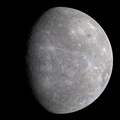Aus einem anderen Forum:
http://www.fr-online.de/rhein-main/pfla ... 91448.html (23. 12. 15)
Es kann ganz nützlich sein, diesen Bericht zu kennen, wenn man etwas aus dem Urlaub mitbringen will!
MfG,
Merkur
Risiken der Einfuhr von ausländischen Pflanzen
4 Beiträge
• Seite 1 von 1
-

Merkur - Beirat
- Beiträge: 3669
- Registriert: Sonntag 6. April 2014, 07:52
- Wohnort: Reinheim
- Bewertung: 9939
Re: Risiken der Einfuhr von ausländischen Pflanzen
Hallo,
es gibt dazu auch schon eine längere Diskussion im Eusozial (denke, das ist ohnehin mit dem "anderen Forum" gemeint).
Auf jeden Fall lesenswert.
es gibt dazu auch schon eine längere Diskussion im Eusozial (denke, das ist ohnehin mit dem "anderen Forum" gemeint).
Auf jeden Fall lesenswert.
- 0
- Colophonius
Re: Risiken der Einfuhr von ausländischen Pflanzen
Hoi,
man kann es aus dem Urlaub mitbringen, oder mittels Warenimport erhalten. Das Prinzip bleibt das Gleiche.
In der Arbeit von Sebastien, A., Lester, P.J., Hall, R.J., Wang, J., Moore, N.E., and Gruber, M.A. (2015). Invasive ants carry novel viruses in their new range and form reservoirs for a honeybee pathogen. Biol Lett 11, 20150610. wird darauf eingegangen, dass man in Linepithema humile das Linepithema humile virus 1 (LHUV-1) in den untersuchten Populationen in Argentinien, New Zealand und Australien gleichermaßen gefunden hat, welches aufgrund der großen Ähnlichkeit zu den Arten der Familie der Dicistroviridae zunächst als Krankheitserreger für Anthropoden im Allgemeinen gilt.
Weiterhin hat man das in New Zealand vorkommende Deformed wing virus in Linepithema humile-Proben aus New Zealand nachgewiesen. Beide Virusarten können sich in Linepithema humile vermehren.
Man führt den Einbruch der Linepithema humile Population in New Zealand unter anderem auf die beiden Virusspezies zurück, ein direkter Zusammenhang zwischen LHUV-1 und dem Einbruch der Population ist bislang nicht nachgewiesen.
Die Dicistroviridae sind eine Familie von Viren, deren Artvertreter unter anderem den Bienen stark zusetzen. Das LHUV-1 wird aktuell zu den Dicistroviridae gezählt. Die Fragestellung, ob LHUV-1 weltweit vorkommt, ist noch nicht beantwortet.
Das Deformed wing virus kommt weltweit vor, die Varroa Milbe dient unter anderem als Reservoir. Nun ist Linepithema humile als Reservoir nachgewiesen. Das Virus schädigt Bienen bei starkem Befall durch Deformation des Abdomens und der Flügel. Eine deutlich reduzierte Lebensspanne (im Allgemeinen unter einer Woche) der infizierten Tiere ist auffällig. Dem Virus wird eine wesentliche Komponente bezüglich des Einbruchs der Bienenpopulation weltweit zugeschrieben.
man kann es aus dem Urlaub mitbringen, oder mittels Warenimport erhalten. Das Prinzip bleibt das Gleiche.
In der Arbeit von Sebastien, A., Lester, P.J., Hall, R.J., Wang, J., Moore, N.E., and Gruber, M.A. (2015). Invasive ants carry novel viruses in their new range and form reservoirs for a honeybee pathogen. Biol Lett 11, 20150610. wird darauf eingegangen, dass man in Linepithema humile das Linepithema humile virus 1 (LHUV-1) in den untersuchten Populationen in Argentinien, New Zealand und Australien gleichermaßen gefunden hat, welches aufgrund der großen Ähnlichkeit zu den Arten der Familie der Dicistroviridae zunächst als Krankheitserreger für Anthropoden im Allgemeinen gilt.
Weiterhin hat man das in New Zealand vorkommende Deformed wing virus in Linepithema humile-Proben aus New Zealand nachgewiesen. Beide Virusarten können sich in Linepithema humile vermehren.
Man führt den Einbruch der Linepithema humile Population in New Zealand unter anderem auf die beiden Virusspezies zurück, ein direkter Zusammenhang zwischen LHUV-1 und dem Einbruch der Population ist bislang nicht nachgewiesen.
Die Dicistroviridae sind eine Familie von Viren, deren Artvertreter unter anderem den Bienen stark zusetzen. Das LHUV-1 wird aktuell zu den Dicistroviridae gezählt. Die Fragestellung, ob LHUV-1 weltweit vorkommt, ist noch nicht beantwortet.
Das Deformed wing virus kommt weltweit vor, die Varroa Milbe dient unter anderem als Reservoir. Nun ist Linepithema humile als Reservoir nachgewiesen. Das Virus schädigt Bienen bei starkem Befall durch Deformation des Abdomens und der Flügel. Eine deutlich reduzierte Lebensspanne (im Allgemeinen unter einer Woche) der infizierten Tiere ist auffällig. Dem Virus wird eine wesentliche Komponente bezüglich des Einbruchs der Bienenpopulation weltweit zugeschrieben.
- 2
Wissen ist Macht und Macht ist Kraft und Kraft ist Energie und Energie ist Materie und Materie ist Masse und deshalb krümmen große Ansammlungen von Wissen Raum und Zeit (Die Gelehrten der Scheibenwelt - Pratchett/Stewart/Cohen)
-

NIPIAN - Administrator
- Beiträge: 281
- Registriert: Sonntag 6. April 2014, 10:43
- Bewertung: 599
Re: Risiken der Einfuhr von ausländischen Pflanzen
Danke für den Hinweis, NIPIAN!
Der Titel sagt ja schon fast genug:
Invasive ants carry novel viruses in their new range and form reservoirs for a honeybee pathogen.
“Invasive Ameisen bringen neuartige Viren in ihr neues Verbreitungsgebiet und bilden Reservoire für einen Krankheitserreger von Honigbienen.“
Nichts anderes habe ich ja 2004 zu bedenken gegeben, als ich den Artikel schrieb:
Risiken und Gefahren zunehmenden internationalen Handels mit Ameisen zu Privat-Haltungszwecken (Hymenoptera: Formicidae). - Myrmecologische Nachrichten 6, 79-82 - Kap. 3. Die Gefahr des Überspringens von Parasiten und Pathogenen auf einheimische Ameisenarten“.
Hier ist es also das Überspringen von Ameisenviren auf Honigbienen, also sogar eine mit Ameisen nur recht entfernt verwandte Art. Ob in Neuseeland auch dort heimische Ameisenarten betroffen sind, wurde anscheinend nicht untersucht.
Das Abstract der Arbeit Sebastien et al. (2015) enthält weitere Angaben, die bedenklich stimmen:
Doch der letzte Satz des Abstracts ist noch mehr alarmierend: „Diese Virenarten könnten zum Zusammenbruch von Populationen der Argentinischen Ameise beitragen, und sie könnten neue Möglichkeiten für die Bekämpfung einer weltweit verbreiteten invasiven Art eröffnen.“
Eine solche „biologische“ Bekämpfung könnte natürlich auch Kollateralschäden an Populationen anderer Ameisenarten bewirken, sowie natürlich auch an den Honigbienen!
Es wäre wieder einmal ein Spiel mit dem Feuer.
PS für Optimisten: Noch steht alles im Konjunktiv, und so lange kein Beweis vorliegt, kann man die Risiken als nicht wirklich existent einordnen. (Nur um allfällige Kommentare vorweg zu nehmen).
MfG,
Merkur
Der Titel sagt ja schon fast genug:
Invasive ants carry novel viruses in their new range and form reservoirs for a honeybee pathogen.
“Invasive Ameisen bringen neuartige Viren in ihr neues Verbreitungsgebiet und bilden Reservoire für einen Krankheitserreger von Honigbienen.“
Nichts anderes habe ich ja 2004 zu bedenken gegeben, als ich den Artikel schrieb:
Risiken und Gefahren zunehmenden internationalen Handels mit Ameisen zu Privat-Haltungszwecken (Hymenoptera: Formicidae). - Myrmecologische Nachrichten 6, 79-82 - Kap. 3. Die Gefahr des Überspringens von Parasiten und Pathogenen auf einheimische Ameisenarten“.
Hier ist es also das Überspringen von Ameisenviren auf Honigbienen, also sogar eine mit Ameisen nur recht entfernt verwandte Art. Ob in Neuseeland auch dort heimische Ameisenarten betroffen sind, wurde anscheinend nicht untersucht.
Das Abstract der Arbeit Sebastien et al. (2015) enthält weitere Angaben, die bedenklich stimmen:
Die Viren wurden also in Linepithema von Argentinien, Australien und Neuseeland gefunden. Nicht auszudenken, was geschieht, wenn sie in Australien auf dort endemische Ameisen überspringen, etwa die bei Haltern beliebten Myrmecia-Arten! (Zumal bei vielen Australiern die stechenden Bull Ants ohnehin nicht beliebt sind).When exotic animal species invade new environments they also bring an often unknown microbial diversity, including pathogens. We describe a novel and widely distributed virus in one of the most globally widespread, abundant and damaging invasive ants (Argentine ants, Linepithema humile). The Linepithema humile virus 1 is a dicistrovirus, a viral family including species known to cause widespread arthropod disease. It was detected in samples from Argentina, Australia and New Zealand. Argentine ants in New Zealand were also infected with a strain of Deformed wing virus common to local hymenopteran species, which is a major pathogen widely associated with honeybee mortality. Evidence for active replication of viral RNA was apparent for both viruses. Our results suggest co-introduction and exchange of pathogens within local hymenopteran communities. These viral species may contribute to the collapse of Argentine ant populations and offer new options for the control of a globally widespread invader.
Doch der letzte Satz des Abstracts ist noch mehr alarmierend: „Diese Virenarten könnten zum Zusammenbruch von Populationen der Argentinischen Ameise beitragen, und sie könnten neue Möglichkeiten für die Bekämpfung einer weltweit verbreiteten invasiven Art eröffnen.“
Eine solche „biologische“ Bekämpfung könnte natürlich auch Kollateralschäden an Populationen anderer Ameisenarten bewirken, sowie natürlich auch an den Honigbienen!
Es wäre wieder einmal ein Spiel mit dem Feuer.

PS für Optimisten: Noch steht alles im Konjunktiv, und so lange kein Beweis vorliegt, kann man die Risiken als nicht wirklich existent einordnen. (Nur um allfällige Kommentare vorweg zu nehmen).
MfG,
Merkur
- 1
-

Merkur - Beirat
- Beiträge: 3669
- Registriert: Sonntag 6. April 2014, 07:52
- Wohnort: Reinheim
- Bewertung: 9939
4 Beiträge
• Seite 1 von 1
Zurück zu Wissenschaft und Medien
Wer ist online?
Mitglieder in diesem Forum: 0 Mitglieder und 6 Gäste
